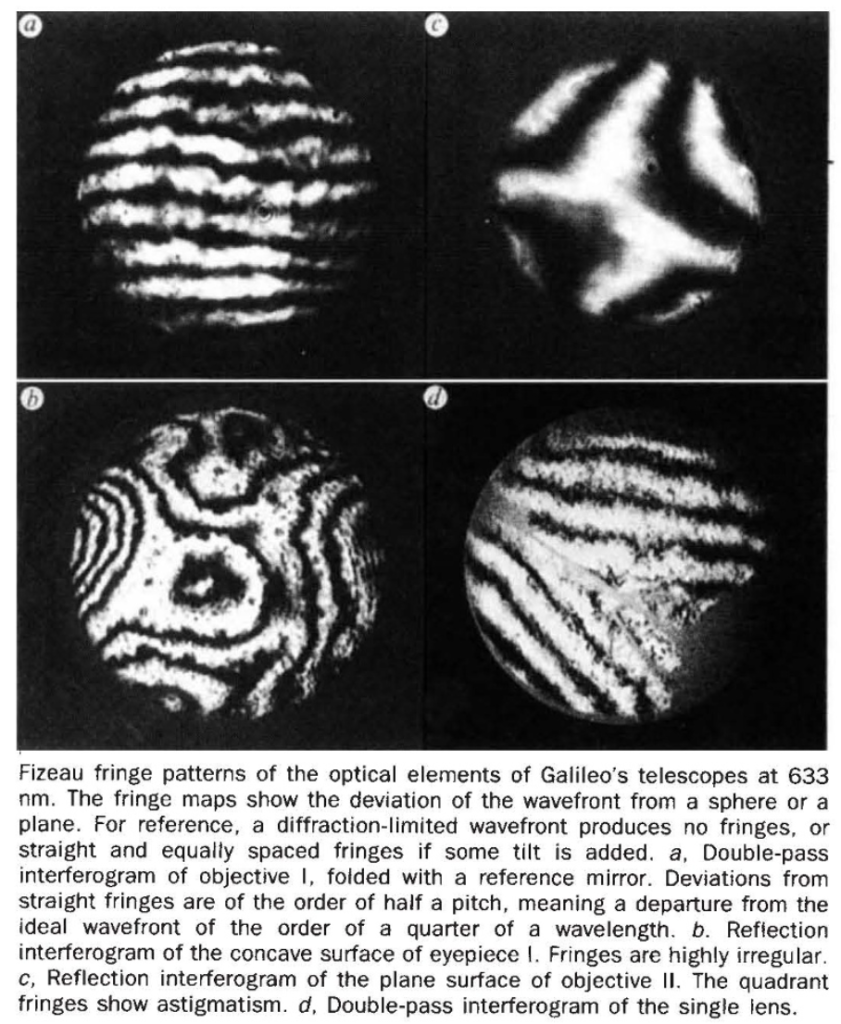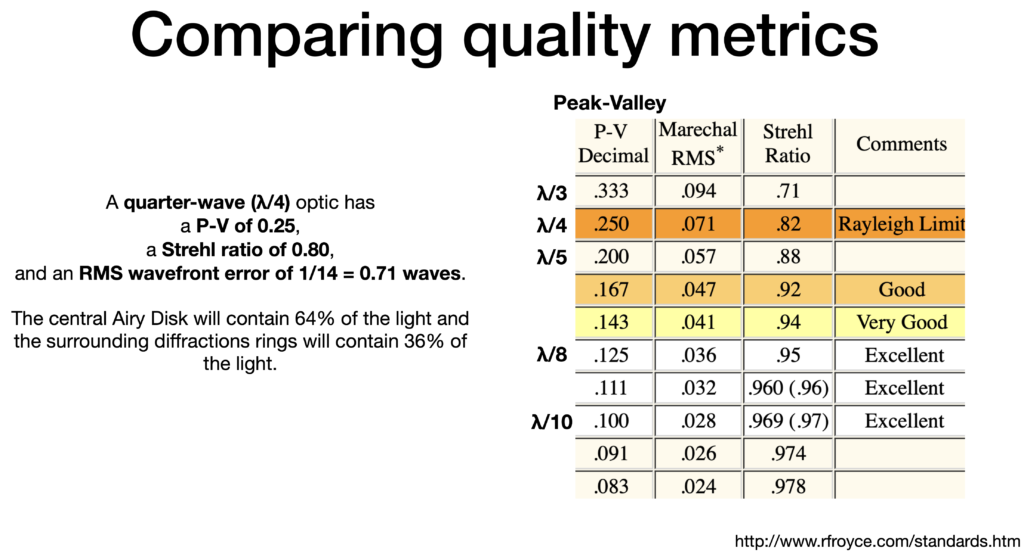Active alignment for diffraction limited optics in the 1600s
In my optics classes, I often give a brief historical account of Galileo’s telescopes. A point I want to make in this post, is that part of the high performance of Galileo’s telescopes was obtained through careful final adjustments. We do the same thing with our optics, designing in correction collars, adjustable air gaps, and even deformable mirrors. Careful application of these tools can provide enough degrees of freedom to recover excellent performance, often diffraction-limited performance, even when the optics are imperfect. With feedback –be it quantitative measurements from instruments or qualitative judgements of image quality– this active alignment process can rapidly converge on excellent optics, as it did for Galileo.
Galileo was dialed into the scientific network of the day to hear rapidly about the Dutch invention of a telescope device. He knew the basic physics and math and figured out how it probably worked. Best of all, he was in the right place at the right time. He lived in Pisa, not far from the best glass makers in Europe, who were– in that same moment– perfecting techniques for making high quality clear glass, and cutting and polishing precision lenses. Galileo’s telescopes revealed new details about the wandering stars, and his findings kicked off a new phase in the development of optics.
Some of Galileo’s telescopes survive to this day, as part of the Medici collection. Giuseppe Molesini and his Italian colleagues have studied these artifacts with modern interferometry and found them to be quite exquisite. These fringe patterns are not that bad, especially for lenses that are over 300 years old.

Here are some more fringe patterns from Galileo’s telescopes, from this publication.



Torricelli, Divini, and Campani were some of the best optics makers of Galileo’s day. Molesini and colleagues have examined lenses from them and found them to be excellent.
Although glass quality had advanced, it was still a major limit on performance. Also, this was before achromatic optics had been developed, so chromatic aberration was often a limiting factor. Despite all of this, Galileo and his contemporaries took many steps to fine-tune their optics– adjusting spacing and adding in diaphragms. The latter, diaphragms, would limit the light entering, but would also ensure that only the best-shaped portions of lenses would contribute to the image. Thus, there is a balance between brightness and image quality. As I tell my students, if you can’t get a ray to where it’s supposed to go, then block it. Relatedly, the practice of smoke-blackening lens tubes was adopted at the very beginning of telescope engineering.